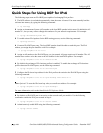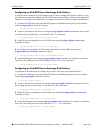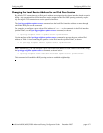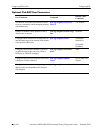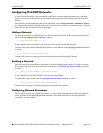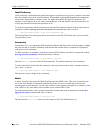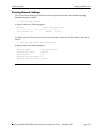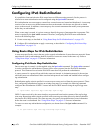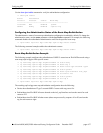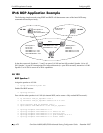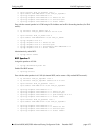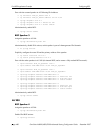
Configuring BGP Configuring BGP for IPv6
OmniSwitch 6800/6850/9000 Advanced Routing Configuration Guide December 2007 page 4-73
Configuring IPv6 BGP Networks
A local IPv6 BGP network is used to indicate to BGP that a network should originate from a specified
router. A network must be known to the local BGP speaker and must also originate from the local BGP
speaker.
Networks have certain parameters that can be configured, such as local-preference, community, metric,
etc. Note that the network specified must be known to the router, whether it is connected, static, or dynam-
ically learned. This is not the case for an aggregate.
Adding a Network
To add a local network to a BGP speaker, use the IPv6 address and mask of the local network in conjunc-
tion with the ipv6 bgp network command, as shown:
-> ipv6 bgp network 2001::1/64
In this example, the network 2001::1/64 is the local IPv6 network for this BGP speaker.
To remove the same network from the BGP speaker, use the no form of the ipv6 bgp network command,
as shown:
-> no ipv6 bgp network 2001::1/64
The network will now no longer be associated as the local network for the BGP speaker.
Enabling a Network
Once the network has been added to the speaker, it must be enabled on the speaker. To do this, enter the
IPv6 address and mask of the local network in conjunction with the ipv6 bgp network status command,
as shown:
-> ipv6 bgp network 2001::1/64 status enable
In this example, the IPv6 network 2001::1/64 has now been enabled.
To disable the same network, enter the ipv6 bgp network status command, as shown:
-> ipv6 bgp network 2001::1/64 status disable
The network would now be disabled, though not removed from the speaker.
Configuring Network Parameters
Once a local IPv6 network is added to a speaker, you can configure three parameters that are attached to
routes generated by the ipv6 bgp network command. These three attributes are the local preference,
community, and route metric.




